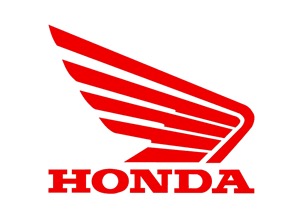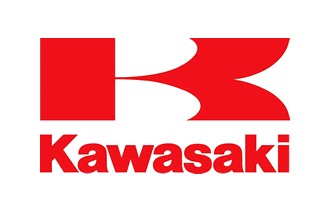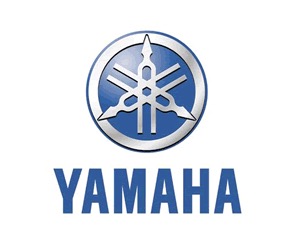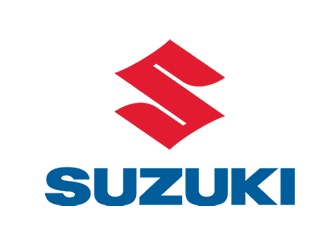|
Tire repair
Japanese OEMs train their dealers to never repair street bike tires. However, this is somewhat disengenuous, because the fact is, all of the Big Four owner's manuals formally permit streetbike tire repair with two qualifications. First, only a Uniseal brand (a combined patch and plug in one piece) plug is acceptable by all the OEMs, and for good reason. Sure, there are a half dozen alternate repair methods, but the Uniseal really is the optimum tubeless tire repair. The second little-known fact concerning tire repair is that according to the OEMs, even using the Uniseal, the repaired tire should be considered afterward to have degraded from whatever speed rating it had originally to the lowest markable rating, 80mph. This too is in the owner's manuals. Additionally, in this context it is interesting to note that all technician training schools, including OEM, teach that installing an inner tube inside a tubeless tire is bad practice because it is unsafe. The interior of a tubess tire has reinforcement ribs that are absent in tube type tires. These ribs have been proven to abrade the unwisely-installed inner tube and lead to its failure.
The term "OEM"
Incidentally, the word "OEM", standing as it does for "original equipment manufacturer", means something completely different in the auto and bike worlds. In the automotive trade it means the same as "vendor", i.e., the hundreds of suppliers of parts that go into making the car. However, while powersports manufacturers also obviously work with many parts suppliers in building their vehicles, with the possible exception of the Harley-Davidson product, the term "OEM" is not applied to those companies. In Big Four powersports, "OEM" refers to the vehicle manufacturer, not the vendor that supplied many of the vehicle's parts.
Those familiar with car and truck repair are astounded by the difference. Unlike in the car world where original and aftermarket are often equal, often even the same exact parts, this is not at all the case in powersports. Very few alternatives to factory parts exist, and almost all of the few that do are such poor quality as to be unusable by any conscientious professional mechanic. Engine gaskets and seals, fork seals, and carburetor rebuild parts are perfect examples. What's even worse, ninety percent of independent shops unwittingly rely on this junk and do substandard work as a result.
What is clearly communicated and important to realize is the distinction between the new vehicle market including new vehicle sales and factory replacement parts controlled by the manufacturer, and the non-factory-sanctioned replacement parts and accessories that are the domain of companies not associated with the manufacturer. This distinction, codified as it is in the completely different definitions of the term "OEM", speaks to two important factors. First, it alludes to the fact that unlike the automotive industry, the powersports aftermarket is not in any way connected to the manufacturer. The manufacturer is not beholden to the aftermarket, and the parts available on the Big Four powersports aftermarket are virtually never the same parts as those parts that came on the vehicle from the factory, despite claims often fallaciously made by those suppliers. The second thing that naturally comes from the first, is that Big Four manufacturers are not friendly with and as a rule do not support aftermarket companies. Exceptions are racing organizations and others, but this distinction between maker and after-sale supplier strongly characterizes powersports, and an understanding of it would greatly improve the knowledge of powersports advocates, especially those "experts" on forums.
Parts stocking
Speaking of parts, many riders are unaware that tax rules and other changes in business practice have dramatically changed how shops stock service parts. Basically, they don't. But some shops take this to extremes. I once managed the service dept. of a historic big name Honda dealership that never stocked anything. I couldn't even take in a flat tire without checking first that we had the inner tube to repair it, or a tuneup without checking to see did we have the spark plugs. Good shops take steps to deal with this, but this scenario is the default mode for most and has been for a more than fifty years.
Voluntary speed limiting
Speaking of vehicle speed, most enthusiasts know that in 2000 the motorcycle manufacturers got together and agreed to a 300 kph (186 mph) limit for all their street-legal hyperbikes. This was an attempt to avoid U.S. government scrutiny in the face of Senator Danforth and others calling for wholesale bans on sportbikes. The manufacturers' agreement was voluntary and not all of them agreed to it, mostly just the Big Four. Interestingly, the earliest speed controls were easy to circumvent. Kawasaki for example used the drive sprocket's hex as a signal generator reluctor. Simply grinding down the points of the hex removed the control. Other systems have been defeated by attaching a chip that "fools" the bike's computer (ECU) into "thinking" the bike is always in low gear, and still other machines have been freed up by actual reflashing of the computer, which is becoming increasingly common.
Antilock brakes
The Big Four Japanese OEMs build their bikes having ABS in such a way that it can't be turned off. Even their traction control systems, which for their part can be turned off, default to instant-on whenever the keyswitch is turned off and back on again. My observation is this situation with ABS especially seems unique to the Japanese companies and is, along with the traction control likely connected with liability. The Big Four are the largest legal liability targets in the industry by a huge margin.
The Big Four vs. the rest
There are many other peculiarities among the Japanese Big Four. For example they use most of the same equipment vendors, but usually no two specifications are the same despite this because they change just enough of the technology's application to make it seem different. Thus Yamaha's pioneering (among the Big Four at least) gyro-based stability systems preceeded Honda's and Kawasaki's by a year, yet all use the same vendor for the all-important inertia chip. Kawasaki however claims the more highly-developed system in its ZX-10R. All the Japanese OEMs source their clutch assemblies from the same Japanese company, their fuel injection systems from either Mikuni or Keihin, their electrical parts from just three Japanese companies, etc. As I explain in another article, this fact of them all drawing from the same technological well unfortunately works against them.
Keyless entry
Many motorcycle maker's larger models are available with a keyless entry system similar to that on most cars. Either the head of the key or the key's fob is a radio transmitter, actually a transponder, which communicates with the bike's computer by radio and signals it to allow starting of the engine. This likely seems overkill for most riders. The secret to why bike manufacturers are creating these systems however is that they offer such a huge theft deterence that they are virtually mandatory outside the U.S., where insurance companies have far more successfully influenced legislation protecting their interests than what is true in the U.S.. In some European countries a new vehicle cannot even be insured (making it legally non-usable) if it lacks a certain level of computerized antitheft technology. While seemingly draconian to Americans, the fallout is Americans get what most of the world wants, like it or not, because vehicle manufacturers can afford to have separate assembly lines only to a certan point, and cannot afford sales restrictions on the part of Europe. Indisputable in all of this is the fact that a simple mechanical locks offers at most a few thousand unique key combinations, and in many cases, depending on the vehicle, only hundreds. Keyless systems on the other hand increase security by providing combinations of codes that potentially number into the hundreds of thousands.
Harley-Davidson
As mentioned, the Big Four is actually the Big Five when American company Harley-Davidson, number one in sales for a few years surrounding 2003, is included. But "Big Four" sounds better, don't you agree? Many are not aware however that these ratings are based on dollars, not on numbers of units. In terms of unit count, Honda is still on top and has been since the early 1970s.
The disconnect in the U.S.
Speaking of big business, the U.S. distribution and support organizations of overseas OEMs--their corporate representatives in other words--are not as proficient as one would assume the inside of a multinational corporation to be. This is true first because the U.S. importers for the foreign manufacturers are only tenuously linked to their the manufacturers. Further, the acumen of these importers is in most cases not equal to that of their parent companies. Thus you have Canada's Bombardier, the maker of Sea-Doos and Ski-Doos, stating in a U.S. publication that horsepower is an amount of work. Any beginning physics student knows is incorrect. It also caused American Honda to incorrectly describe their ignition systems, Yamaha Corp of America in training literature to reverse the descriptions of vertically and horizontally split crankcases, and Kawasaki Motors Corporation U.SA. to mix up advancing and retarding of one of their bike's variable timing intake cams. Speaking of Kawasaki, the serious lack of communication at the Big K also resulted in the most expensive mistake in the company's history, that of insufficiently vetting a third party in the production of Concours police bikes, with the result a recall of all these bikes that involved three and a half years and many millions of dollars.
Big Four autonomy
While on the subject of manufacturer-to-outside relationships, one of the most surprising powersports industry secrets, one that those not working within the business are scarcely able to believe, is that the Big Four actually and ultimately have no control over their dealers. Unlike the much stricter American and most Euro brands, Honda, Yamaha, Suzuki and Kawasaki--and almost as much their U.S. distributors--have no say in the day-to-day operations of the dealers of their products. They don't have input into hiring, staff qualifications, business practices, sale prices, days and hours of operation, profit margins, any of that. They can't even force them to get technical training, good training by the way, and often free or very low-priced.
The reason is intriguing. It has to do with the so-called "Japanese invasion" of the 1960s. During their emergence into the American market, the Japanese made too few demands on new dealer signups. Their business agreements (contracts) gave the dealers too much power. And until the dealer goes out of business, that same ancient agreement stays effective. In short, the Japanese manufacturers got their dealers the easy way--too easy, really--which now costs them dearly, while the other brands got theirs the harder way, a fact now in their favor, with the result that the two sides of the industry (Japanese vs. all the rest) look very very different today. In a nutshell, the Japanese sell the most units but have the least control, while the rest of the industry sells the dregs but enjoys very strict, more businesslike relations with their dealers.
Technical training
Speaking of training, and actually linked to the above issue, Japanese companies for the most part give mere lip service to technical training, expending resources at middling levels only after good sales years, and not at all otherwise. During the 2008-2010 recession for example Honda stopped training altogether, Kawasaki temporarily brought video production in-house at a ridiculously-slashed budget, and Suzuki went bankrupt. (Yes, bankrupt. The U.S distributor had to reorganize, changed their name, and reestablished all Suzuki dealers.) The Japanese by and large are just not committed to training. However, it should be noted that Yamaha stands out as the most consistent and most dedicated to training of the Big Four, and Harley-Davidson among the Big Five.
Big Four new bike prep
A very peculiar situation exists regarding new bike prep at Big Four dealerships. Assembly and prep out of the crate is regarded by law as actually a part of-- pthe last part, but still a part-- of vehicle manufacture. Thus it is high liability exposure to the manufacturer, and is therefore accompanied by all sorts of legal paperwork and official admonishments by the manufacturer. And yet, assembly and prep is nowhere given more short shrift than among Big Four manufacturers and dealers. They can hardly be bothered with doing it right; it inevitably is relegated to the least experienced individual in the dealership, is renumerated (to the dealer) the least by the manufacturer, and is generally taken the least seriously of all that goes on in the dealership, leading to safety issues, more customer dissatisfaction, and in fact more customer complaints about the new bike purchase experience than about any other single thing, by a ratio of at least five to one, as documented by the companies' own CSI systems. Which systems are the distributors approach to the problem. Yet the situation continues. Simply bizarre.
Soulless?
Here's another significant Big Four fact. Consumer Reports magazine in 2013 did their first survey of motorcycle owner satisfaction, and their results rocked the industry, particularly the largest segment, the Big Four OEMs. Riders reported that they would rather own a machine that gave more mechanical problems yet had a "soul", than a bike with fewer issues that connected with them less emotionally. Consumer Report's subscribers said they prefer more quirky Harleys, BMWs, Triumphs and Ducatis over historically more dependable (by a three-to-one margin, admittedly) Hondas and Yamahas. I have written on this elsewhere. But it says a lot about how the Japanese have, as many say, possibly begun to "lose their way".
Not everything is a recall
Within the industry it is well understood that formal dealer bulletins generically called a Recall, a Service Advisory, and a Service Action (these are Kawasaki's names, Honda and others have different titles for the same documents) are very different things. However, this distinction is lost among the general public. I will blame the voices that should be preventing that, the many riders' organizations, online media (especially), and possibly also the Big Four manufacturers' representatives, their distributors (not the dealers). Everywhere I look the word "recall" is used as a synonym for any distributor's after-sale action. But this is far from true. The various service campaigns (the umbrella term used to mean all notices) are each something very different. Starting with the mildest, a Service Advisory is a technical change that is beneficial but not mandatory, the factory usually will not pay for it, and it has no safety aspect. A Service Action is more strongly suggested, often (but not in every instance) will be paid for by the factory, has a limited timeframe, but still has nothing to do with safety. A Recall is altogether different from the other two. It is unique. A Recall is not limited in any way, except (and importantly) in the vehicle's eligibility based on VIN. Once determined, it is always mandatory, it is always paid for by the factory, it never has a time limit (the Honda fuel tank cap Recall more than 40 years later is still current today), and it is always safety related--always. There are no Recalls on appearance items, sounds, performance (unless characterized by engine stalls). A Recall by definition is about something that can get you killed or seriously injured, and about nothing else. And now you know.
Disencentivising mechanics
Another thing not well understood among the riding public is how motorcycle mechanics are paid. See my website for a more thorough treatment. But essentially, no matter the payment system, it usually comes down to some sort of incentive arrangement. On one hand you can appreciate how efficient that could make things. The mechanic isn't likely to waste time when it costs him directly. But the reality is, and everyone needs to consider this, the flip side is this setup almost always results in the mechanic being penalized for doing good work. With rare exception, it comes out of the mechanic's pocket when that little bit of extra effort that will make the difference between an adequate job and an exceptional, really quality job, is discouraged monetarily. I suppose everything works that way in the end. Your medical provider uses the cheaper anesthetic instead of the one more heart-healthy, and you have to do battle with your insurance provider more often than not. Having my own business has done more to erase the pain and frustration of nearly a lifetime under the powersports incentive pay system than ever I imagined it would. Working on bikes is fun again. It never could be the other way, always taking it in the shorts for being the good guy.
The ten-year rule
Many who only recently got into vintage bikes are surprised to learn that franchised dealers almost universally have a seven- or ten-year rule. They won't work on machines more than 7-10 years old. Far from arbitrary, there are some pretty good reasons for this. One, the OEMs promote this tactic. They do that by discouraging dealer parts inventory, by every few years eliminating old parts stock at their warehouses, by not training mechanics in older models, and by quickly discontinuing various models' special tools. But it isn't all the OEM. Other reasons dealers have for not taking in older machines include a lack of dealer staff experienced in older stuff, inconsistent parts availability, and perhaps most important of all, the relatively low monetary value of a several-years-old Japanese bike that results in either its abandonment at the dealership due to the owner's lost interest or a service bill higher than the machine is worth. These things are very common. However, even suggesting a deposit before the work starts often insults the customer. The dealer can't win. And he has learned not to try.
Service manuals
It is hard to adequately communicate how much aftermarket manuals are loathed by career mechanics. These books are consistently bad and the subject of much ridicule on the inside of the industry. When I was a dealer mechanic, even mentioning a Clymer manual was akin to admitting you had VD. This is not hyperbole; if anything it is an understatement. After leaving a career in dealerships and shifting to making a living outside them, I was absolutely gobsmacked to discover that Clymers even still existed, let alone that their use has increased. It simply makes me shudder. The factory manuals are not without fault of course. Two things make them less than perfect. One, most of the Big Fours' manuals are produced in Japan. As a result they depict tools that are unavailable in the west, procedures that make little sense, and often show bikes that are not even U.S. models. The second and possibly most significant weakness of factory manuals is that over time they have been forced by the American legal system to become legal defense documents. A fact. As manufacturers' defending themselves has taken priority over communicating practical and effective repair technique, the manuals have reflected this increasingly. While OEM owner's manuals are all about fifteen ways to not swallow the ignition key, service manuals are not far behind, though their tactic is simply to water down or avoid technical subjects so that they cannot be used against the manufacturers in court. Compare OEM manuals from the 1960s and 1970s to today's and you'll see it the change.
Paint codes
The Internet is still struggling with correctly answering inquiries about Honda motorcycle paint. The fact is, the paint code labels Honda put on their bikes during the 80s were connected with a short-lived factory touch-up paint program begun in 1982 and which died shortly after. The Honda-labeled tiny bottles of paint with built-in brush (exactly like those in the car industry) were created and marketed by Color Rite, and Honda actually sold the Color Rite product rebranded under Honda part number.
But here is the important thing: even during this couple-year period, there was and is no such thing as factory Honda paint. Yes, Color Rite also sold pints, and unconnected with this, even Honda included a 5 oz. can of Japanese-labeled touch-up paint inside the CB750's crate in the early 70s. But both of these are history. And yes, a company that started as the suspension fluid supplier to Italian fork maker Cerrani, Lubritech, did, way before Color Rite, also market Honda replacement paint in both bulk and aerosol cans. But this was an even earlier third-party effort and still not in any way connected with Honda, though Honda did endorse the paint in a dealer bulletin. Lastly, attempts by many to take either the earliest Lubritech paint codes or the later Color Rite/Honda codes to a professional painter and formulate a color have proven fruitless. There is no U.S.-accessible Honda powersports paint code system. You must find someone who has had color custom-mixed and take that person's recommendation.
|

 ®
®



